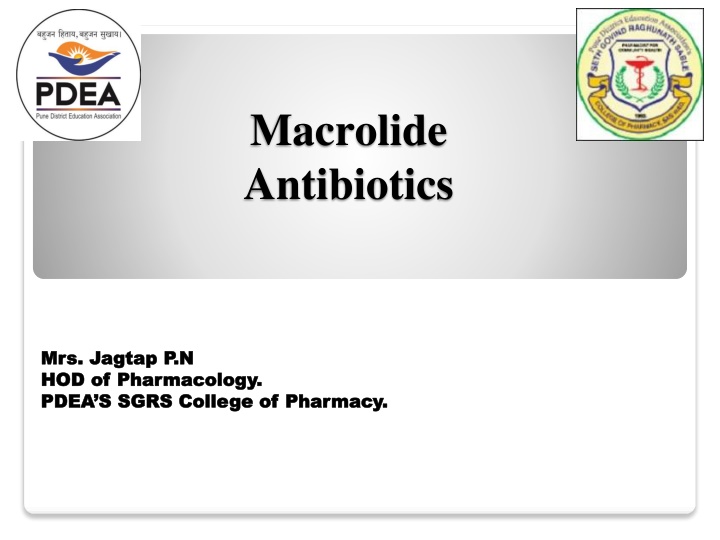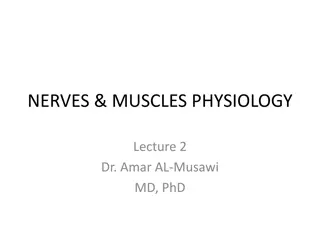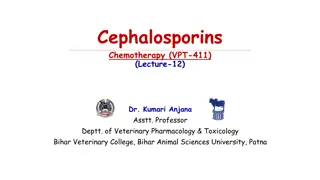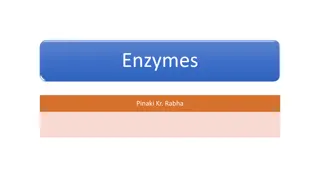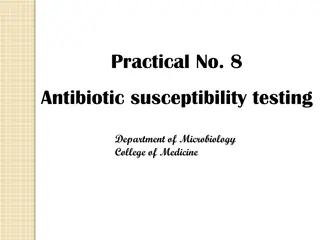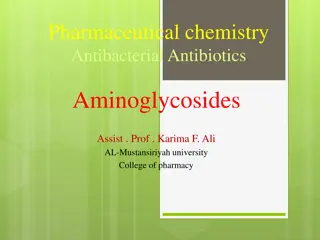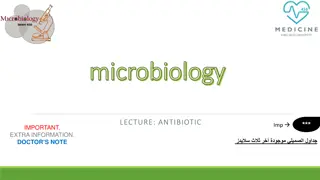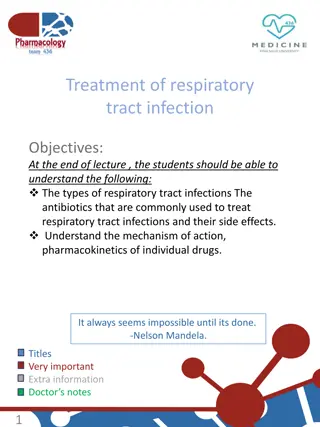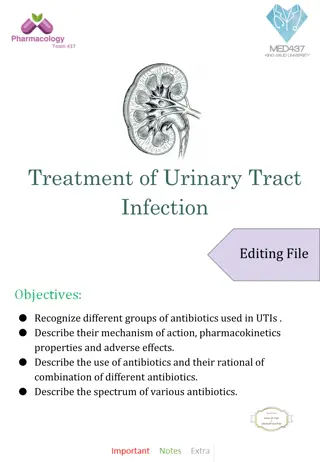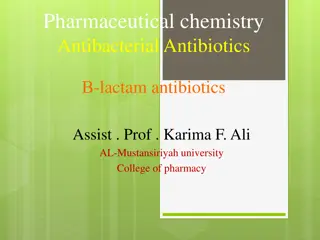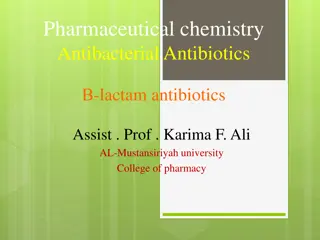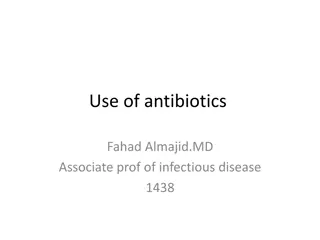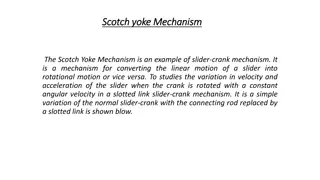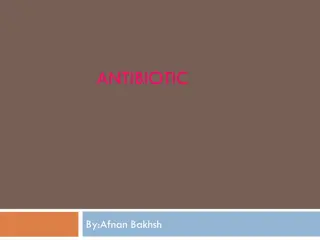Overview of Macrolide Antibiotics and Their Mechanism of Action
Macrolide antibiotics are a group of compounds with a macrocyclic lactone ring attached to deoxysugars. This article covers their classification, mechanism of action, spectrum of antibacterial activity, bacterial resistance, and pharmacokinetics.
Download Presentation

Please find below an Image/Link to download the presentation.
The content on the website is provided AS IS for your information and personal use only. It may not be sold, licensed, or shared on other websites without obtaining consent from the author.If you encounter any issues during the download, it is possible that the publisher has removed the file from their server.
You are allowed to download the files provided on this website for personal or commercial use, subject to the condition that they are used lawfully. All files are the property of their respective owners.
The content on the website is provided AS IS for your information and personal use only. It may not be sold, licensed, or shared on other websites without obtaining consent from the author.
E N D
Presentation Transcript
Macrolide Antibiotics Mrs. Mrs. Jagtap Jagtap P.N HOD HOD of Pharmacology. of Pharmacology. PDEA S SGRS College PDEA S SGRS College of Pharmacy P.N of Pharmacy. .
INTRODUCTION The Macrolides are a group of closely related compounds characterized by a macrocyclic lactone ring (usually containing 14 or 16 atoms) to which deoxysugars are attached. The prototype drug Erythromycin, which consists of two sugar moieties attached to a 14-atom lactone ring.
It erythreus. Clarithromycin and was obtained in 1952 from Streptomyces Azithromycin are semisynthetic derivatives of Erythromycin.
CLASSIFICATION MACROLIDES i. ERYTHROMYCIN ii. CLARITHROMYCIN iii. AZITHROMYCIN iv. ROXITHROMYCIN v. SPIRAMYCIN KETOLIDES i. TELITHROMYCIN
MECHANISM OFACTION Inhibits protein synthesis by reversibly binding to the 50S ribosomal subunit Suppression of RNA- dependent protein synthesis by inhibition of translocation of mRNA. Typically bacteriostatic activity Bactericidal at high concentrations against very susceptible organisms
SPECTRUM OF ANTIBACTERIALACTIVITY Macrolides are similar to Penicillins regarding their spectrum of activity. They strains. are effective against Penicillin-resistant
BACTERIALRESISTANCE Methylation of a guanine residue on ribosomal RNA leads to lower affinity toward Macrolides An active efflux system Presence of a plasmid-associated Erythromycin esterase.
Clarithromycin and Azithromycin show cross- resistance with Erythromycin, but Telithromycin can be effective. Against Macrolide-resistant organisms. Lack of cell wall permeability to Macrolides is the reason why G(-) bacteria are resistant to antibacterial effects of these agents.
PHARMACOKINETICS ABSORPTION variable absorption, food may ERYTHROMYCIN decrease the absorption. Base: destroyed by gastric acid Enteric coated Esters and ester salts: more acid stable CLARITHROMYCIN acid stable and well-absorbed regardless of presence of food. AZITHROMYCIN acid stable, food decreases absorption of capsules.
DISTRIBUTION: Extensive tissue and cellular distribution Clarithromycin and Azithromycin penetration . No BBB and CSF penetration with extensive Erythromycin accumulates in the prostatic fluid and also in macrophages. Azithromycin Macrophages, Fibroblasts. Has distribution and longest half life (greater than 40 hrs) accumulates in Large volume of Neutrophils,
ELIMINATION: Clarithromycin is the only Macrolide partially eliminated by the Kidney(18% of parent and all metabolites). Hepatically eliminated:ALL. Erythromycin and Azithromycin are primarily concentrated and excreted through bile.
ADVERSEEFFECTS GASTROINTESTINALEFFECTS: Anorexia, nausea, vomiting, and diarrhoea occasionally accompany oral administration. Gastrointestinal intolerance, which is due to a direct stimulation of gut motility, is the most common reason for discontinuing Erythromycin and substituting another antibiotic.
LIVERTOXICITY: Erythromycins, particularly the estolate, can produce acute cholestatic hepatitis (fever, jaundice, impaired liver function), probably as a hypersensitivity reaction. Most patients recover from this, but hepatitis reoccurs if the drug is Re administered. Macrolides get deposited in perilymph and causes ototoxicity. Other allergic reactions include fever, eosinophilia, and rashes. Prolong QT WAVE
DRUG INTERACTIONS Erythromycin metabolites can inhibit cytochrome P450 enzymes and thus increase the concentrations of numerous drugs including, Theophylline, Oral anticoagulants, And Methylprednisolone, serum Erythromycin increases serum concentrations of oral Digoxin by increasing its bioavailability.
THERAPEUTIC USES OF ERYTHROMYCIN It is used to treat a. The upper part of the respiratory tract infections, b. Urethritis e. Chlamydia infections Majorly C. Trachomatis - (may result in Urethritis, epididymitis, cervicitis, pelvic inflammatory disease (PID) and other conditions. ) C. Pneumonia causes respiratory illness (prolonged cough, bronchitis, and pneumonia as well as a sore throat, laryngitis, ear infections, and sinusitis)
